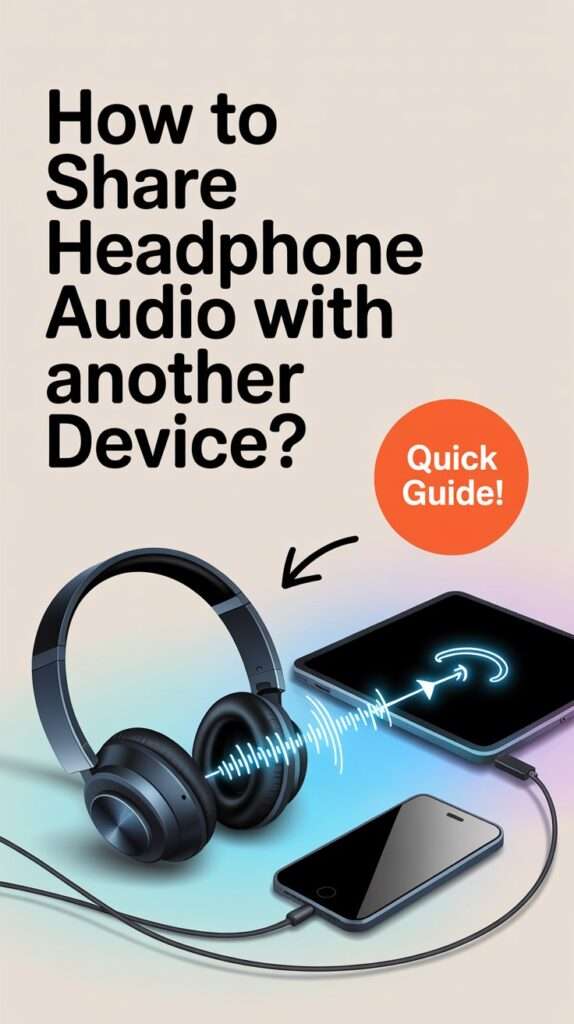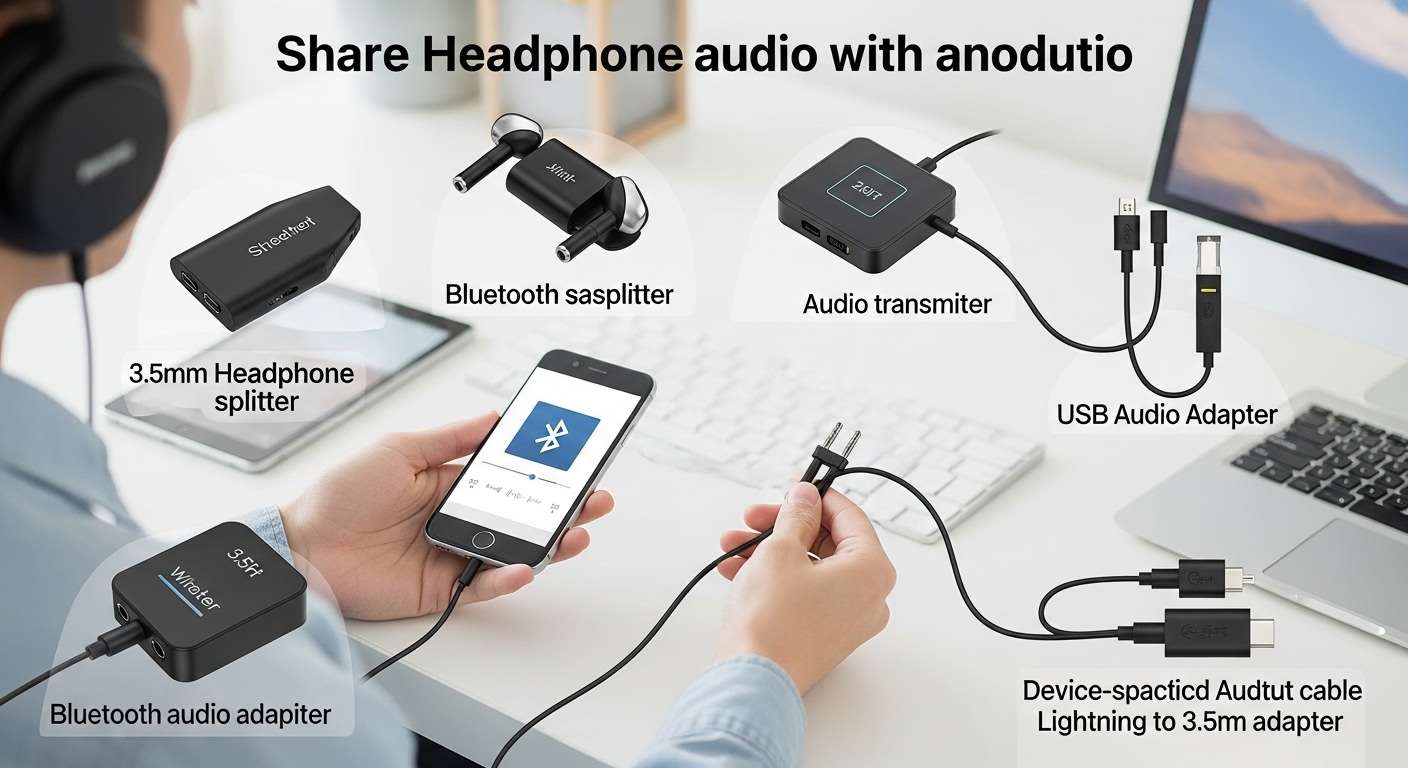Picture this: you’re on a long flight, the in-flight movie just dropped a banger soundtrack, and the person next to you keeps peeking at your screen like a starving raccoon. You want to be nice and share the audio… but you only have one pair of headphones.
Ugh, classic first-world tragedy, rite? Lucky for both of us, tech finally has your back. Let me walk you through every legit way to share headphone audio with another device – no sketchy splitters that sound like a tin can telephone required.
1. The Old-School Way That Still Slaps: Wired Splitters
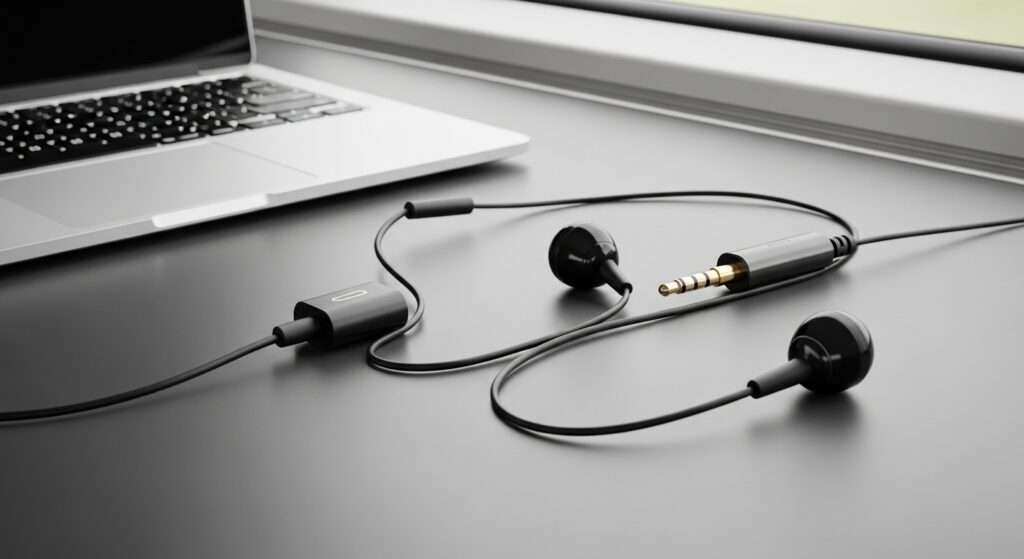
Yeah, I know we’re fancy wireless people now, but hear me out – a 3.5mm headphone splitter still costs like five bucks and works EVERYWHERE.
You plug it into your phone or laptop, connect two pairs of wired headphones, and boom – instant shared listening. I used one on a 14-hour train ride across Europe last year and honestly? The sound quality beat half the Bluetooth options I’m about to mention. No latency, no battery anxiety, zero setup.
When a Splitter Actually Wins
- Flights (airplane mode doesn’t kill it)
- Old-school laptops without Bluetooth
- When you’re too broke for AirPods (been there)
Downside? You’re literally tethered together. Try going to the bathroom and you’ll recreate that Spider-Man pointing meme in real time.
2. Apple’s Audio Sharing: The Feature You Forgot Existed
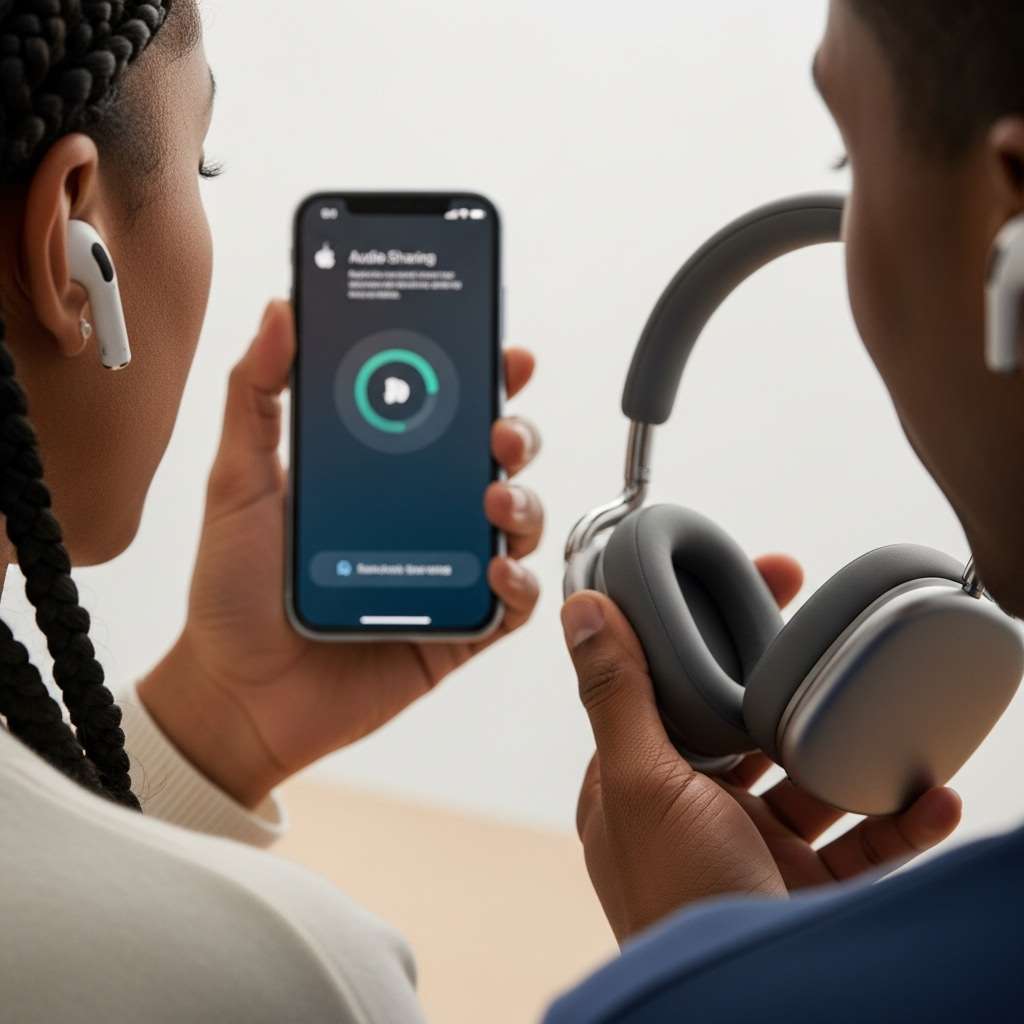
If both of you rock AirPods or Beats (thanks, Apple tax), Apple Audio Sharing makes everything stupidly easy.
How to Use Apple’s Temporary Audio Share
- Put both pairs in your ears
- Bring your iPhones/iPads close together
- Tap “Share Audio” when the popup appears
- Profit
I tested this on iOS 18 last month with my sister – zero lag watching TikToks on a plane. The volume sliders are independent too, so she can blast her eardrums while I keep my hearing intact. Chef’s kiss.
Pro tip: Works permanently too if you add their AirPods to your “Family” devices. Creepy? Maybe. Convenient? Absolutely.
Android’s Got Tricks Too – Dual Audio & Audio Share
Google finally caught up. Most modern Samsungs, Pixels, and OnePlus phones let you connect two Bluetooth headphones at once through Dual Audio or Bluetooth 5.0 multipoint.
3. Samsung’s Dual Audio (My Daily Driver)

- Open Quick Settings → Media Output
- Tap the little two-headphone icon
- Connect second pair
- Both devices play simultaneously
I use this ALL the time with my Galaxy Buds 2 Pro and my girlfriend’s random Amazon buds. Works like 90% of the time, which in Bluetooth land is basically witchcraft.
The Catch (Because There’s Always a Catch)
Some cheaper Android phones still don’t support it. And latency? Noticeable when gaming, fine for Spotify or Netflix.
4. Third-Party Apps That Save the Day
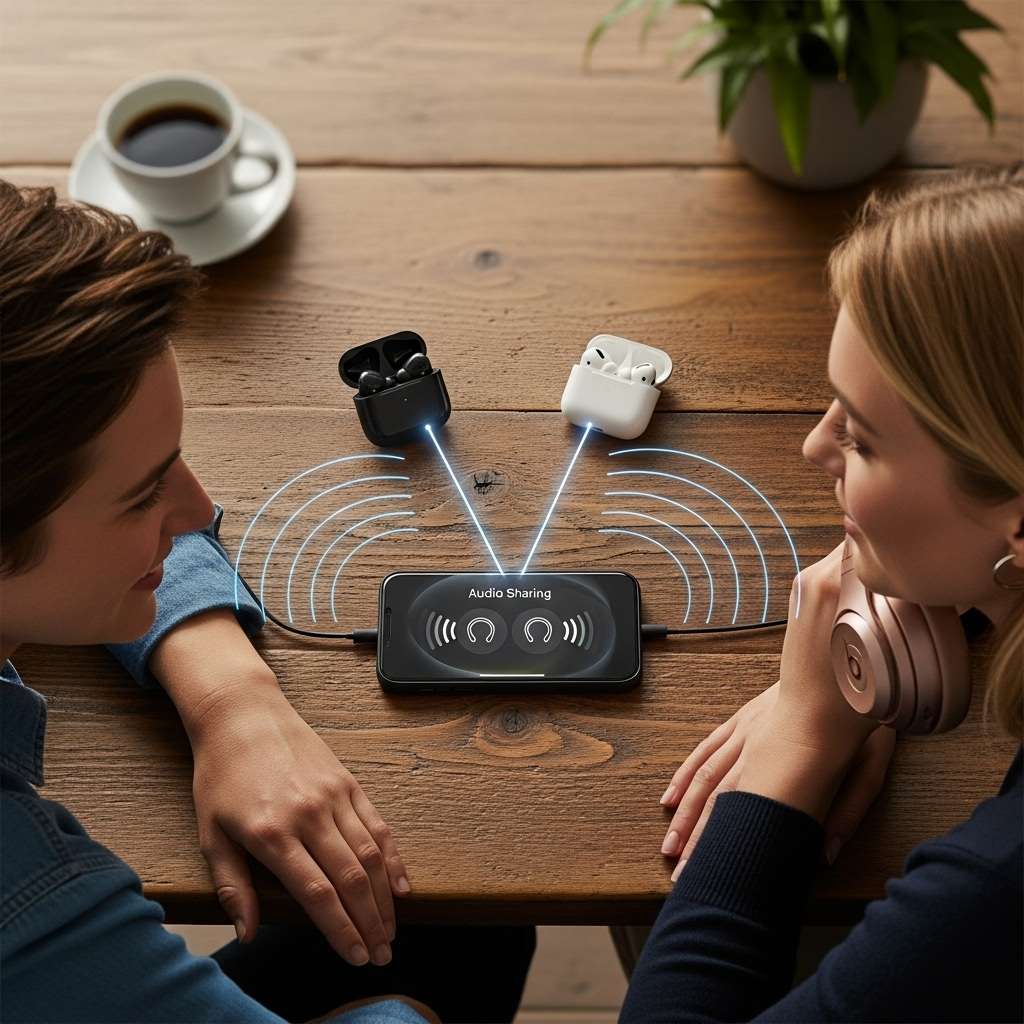
Sometimes your phone just refuses to play nice. That’s when I pull out the big guns.
AmpMe – The Underrated Hero
This app syncs music across multiple phones over Wi-Fi or Bluetooth. You create a “party,” others join with a code, and everyone hears the same thing perfectly synced.
I used AmpMe at a beach house with eight people – sounded like a legit speaker system. Downside: needs internet for best sync, but works offline too if you’re the host.
Bluetooth Audio Sharing Apps (Android Only)
Apps like SoundSeeder and Bluetooth Audio Widget turn one phone into a transmitter and the other into a receiver. Kinda janky, kinda genius.
5. The Nuclear Option: Bluetooth Transmitters

Got wired headphones but want wireless sharing? Grab a Bluetooth 5.3 transmitter with dual-link support (I swear by the 1Mii or Twelve South AirFly).
Plug it into your phone’s headphone jack (or USB-C adapter – RIP headphone jacks), pair two headphones, and you’re golden. I keep an AirFly Duo in my travel bag religiously. Works on airplanes, Switch, gym equipment… literally everything.
Why I Love Transmitters More Than Life
- aptX Low Latency means no lip-sync issues
- Connects ANY headphones (even your $400 audiophile cans)
- Battery lasts 20+ hours
Quick Comparison Table (Because I Love You)
| Method | Latency | Quality | Cost | Works on Planes? | Difficulty |
|---|---|---|---|---|---|
| Wired Splitter | None | Best | $5 | Yes | Easy |
| Apple Audio Sharing | None | Amazing | Free | Yes | Stupid Easy |
| Samsung Dual Audio | Low | Great | Free | Yes | Easy |
| Bluetooth Transmitter | Low | Great | $30-60 | Yes | Medium |
| Third-party Apps | Varies | Good | Free | Sometimes | Medium |
6. The One Hack Nobody Talks About

Your smart TV probably supports dual Bluetooth headphone pairing. Next time you’re binging at 2 AM without waking the house, check the audio settings. My LG OLED lets me connect two pairs natively. Mind = blown.
What About Sharing with More Than Two People?
Short answer: you’re cooked unless you use AmpMe or a transmitter that supports 3+ devices (they exist, but rare). Otherwise, just buy a Bluetooth speaker and call it a day, ya animal.
Final Thoughts – Pick Your Poison
Honestly? I keep three solutions in my arsenal:
- AirFly Duo for travel (never fails)
- Wired splitter as backup (because Murphy’s law)
- Dual Audio on my phone for daily use
The “best” way totally depends on what devices you own and how lazy you feel that day. Me? I’m usually lazy, so Apple/Samsung native sharing wins 90% of the time.
So next time someone gives you puppy eyes because they wanna share your playlist, you can smirk and go “hold up, lemme show you something cool.” You’ll look like a tech wizard and they’ll love you forever. Win-win 🙂
Now go forth and share those beats responsibly. And if someone tries to make you listen to their true-crime podcast for the 47th time… well, that’s when you “accidentally” disconnect
